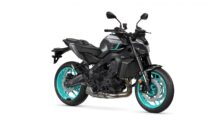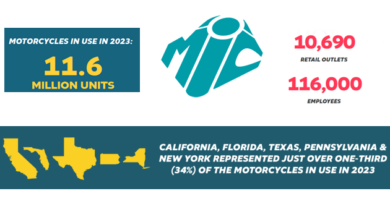Kawasaki revamps lone new model for 2012
Kawasaki unveiled a single new model to dealers during the company’s October dealer show in Florida, a retooled Ultra LX that borrows heavily from the Ultra 300X introduced early in 2011. Billed as an “all-around, go-everywhere cruiser,” the Ultra LX promises low emissions and a fuel-efficient ride that should appeal to touring riders, yet still offer the sporty handling that aggressive riders crave.
New Hull, New Attitude
The biggest change in the 2012 Ultra LX over the previous generation is the adoption of the Ultra 300 hull and nozzle design. Featuring a 22.5-degree deadrise, it’s now lighter by nearly 43 pounds, as well as beefed up in key stress areas for improved stiffness and durability.
Stability is top notch in varied riding conditions, including the truly rough waters the Ultras have long been known to tame.
In calmer conditions, that hull will bank into a corner with an intuitive inside lean, displaying a steering response that has been enhanced by a 20mm shorter steering nozzle.
This continues to be a platform Kawasaki has honed on racecourses both on land and sea. The 1,494cc engine is based on the popular ZX-14 sport bike and produces a competent, but yet never overpowering 160 hp. By foregoing the supercharger and intercooler addition that breathe additional speed into the 300 models, Kawasaki has cut fuel consumption while delivering the additional range that long-distance riders require. Still, this powerplant is no slouch. A 155mm jet pump turns that engine’s power into nearly 1,000 pounds of thrust, giving the boat plenty of punch for towing skiers and wakeboarders, and more than enough to slingshot a tube. That punch will also give a nice kick to a solo rider looking to shred like the big boys.
As in previous years, Kawasaki has tweaked this engine for best results. Connecting rod bolts have been strengthened, crankcases have been reinforced, and more durable main journal and big-end inserts are used. The ECU has also been adjusted to further lower exhaust emissions.
Away from the engine, other improvements make their way from the retooled 300 models. The shape and arc of the reverse lever has been modified to give the function what Kawasaki calls a “lighter” feel. The LCD display is also easier to read and includes more information than previous models, the speed sensor is now promised to be more accurate, and the forward stowage hatch release has been redesigned for improved ease of use. A groove in the ride plate also enhances straightline stability.
Familiar Traits
Kawasaki has wisely chosen not to mess with the Ultra LX’s standout features. Storage and fuel capacities remain industry leaders, with 60 gallons of stowage capacity, most of it in the craft’s cavernous front tub. Additional storage is found in the deep front glove box. Fuel capacity, at 20.6 gallons, is also an industry best. Combined with the more miserly engine of the Ultra LX, it should offer expanded touring ability, as well as appeal to Kawasaki consumers who want the Ultra hull but not the supercharged Ultra’s fuel bills.
The supportive, plush touring saddle also remains, with clearly defined backrests to offer lower-back support as well as lock driver and passengers into position. Kawasaki continues to use a slightly softer foam in the bolster than some of its competitors. That allows a standing rider to “squat” atop a bolster for a little more support, without feeling the wrath of its rigid structure. Speaking of standing, a five-position, tilt-adjustable steering also pivots forward to complement that position, as well as tailor the boat to drivers of differing heights or riding style. The ride continues to be quite dry thanks to spray deflectors built into the hull.
Other familiar traits also continue. Kawasaki Smart Steering boosts thrust at the pump should a driver release the throttle and turn the bars sharply, as in a collision-avoidance maneuver. Smart Learning Operation (SLO) also allows an owner to tame the craft’s power when turning over the controls, or as a means to save fuel.
One final touch? A bolder color scheme differentiates the boat from its predecessor. Sunbeam Red is used atop the hood, offset by a white deck and black hull, a combination that gives the boat a more aggressive appearance. Bucking recent trends, MSRP has increased only $100 to $10,999.








